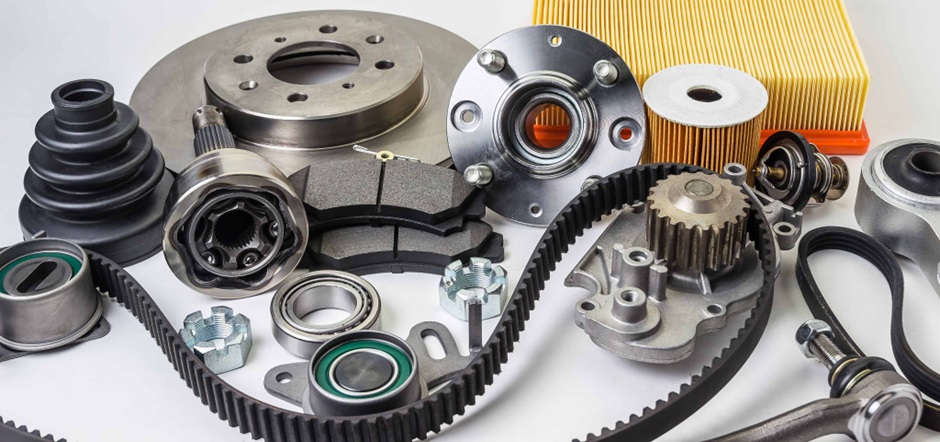The performance of a vehicle is intricately tied to its components, collectively referred to as auto parts. From the engine to the tires, each part plays a critical role in determining how well a vehicle operates, its efficiency, and its overall safety. Understanding the importance of these components is essential for both manufacturers and consumers who wish to maximize the performance of their vehicles.
The Foundation: Engine Components
The engine is often regarded as the heart of any vehicle, and its performance is largely dictated by its auto parts. Key components include the pistons, crankshaft, camshaft, and valves. Each part must work in harmony to ensure efficient combustion, power generation, and energy transfer to the drivetrain. For instance, high-performance pistons made from lightweight materials can enhance engine efficiency by reducing friction and improving thermal conductivity.
Moreover, the engine’s performance can be significantly affected by aftermarket auto parts such as performance exhaust systems and air intake kits. These modifications can enhance airflow and exhaust flow, resulting in increased horsepower and torque. However, it is essential to ensure that any modifications align with manufacturer specifications to maintain vehicle integrity.
Transmission and Drivetrain: Power Transfer Efficiency
The transmission and drivetrain are crucial auto parts that transfer power from the engine to the wheels. A well-designed transmission allows for smooth gear shifts, optimizing engine performance and fuel efficiency. Automatic and manual transmissions each have distinct advantages; for example, manual transmissions can offer drivers greater control over gear selection, which can be beneficial in performance driving scenarios.
The drivetrain, including components like the driveshaft and differentials, also plays a significant role in a vehicle’s performance. High-performance differentials, such as limited-slip or locking differentials, can improve traction and handling, particularly in adverse conditions. When these auto parts are selected and maintained correctly, they ensure efficient power delivery, ultimately enhancing vehicle performance.
Suspension and Handling: Stability and Comfort
The suspension system comprises various auto parts, including shocks, struts, springs, and control arms, that significantly affect vehicle handling and ride quality. A well-tuned suspension system provides stability during cornering, absorbs road imperfections, and ensures comfort for occupants. Upgrading to performance-oriented suspension components, such as adjustable coilovers, can improve handling by lowering the vehicle’s center of gravity and reducing body roll.
Additionally, anti-sway bars can enhance stability during turns, allowing for sharper handling and improved cornering performance. The choice of suspension auto parts is vital for both everyday driving and high-performance applications, as it impacts how a vehicle responds to driver inputs and road conditions.
Brake System: Safety and Performance
The brake system is one of the most critical auto parts when it comes to vehicle safety and performance. Comprising components like brake pads, rotors, calipers, and lines, the effectiveness of the brake system can significantly impact overall driving experience. High-performance brake pads and rotors can enhance stopping power and reduce brake fade, particularly during aggressive driving or when towing heavy loads.
Furthermore, the choice of brake fluid and the condition of brake lines are crucial for maintaining braking efficiency. Upgrading to stainless steel brake lines, for example, can improve pedal feel and responsiveness, providing drivers with greater confidence in their vehicle’s braking capabilities.
Tires: The Only Contact with the Road
Tires are arguably the most crucial auto parts when it comes to vehicle performance, as they are the only components that make direct contact with the road. The right tires can significantly enhance traction, handling, and ride comfort. Factors such as tread design, rubber composition, and tire pressure all play a role in a vehicle’s performance.
Choosing performance tires can provide better grip during acceleration, braking, and cornering. Moreover, regular tire maintenance, including rotation and alignment, is essential to ensure optimal performance and extend the lifespan of these critical auto parts. Investing in quality tires can result in improved fuel efficiency and overall driving safety.
Conclusion: The Interconnectedness of Auto Parts
The performance of a vehicle is a complex interplay of various auto parts, each contributing to the overall functionality and driving experience. Understanding how these components work together allows manufacturers to design more efficient vehicles and helps consumers make informed choices when purchasing or upgrading their vehicles.
From the engine and transmission to suspension and tires, every auto part has a role to play in optimizing vehicle performance. Regular maintenance and thoughtful upgrades can enhance these components’ effectiveness, ultimately leading to a safer, more enjoyable driving experience. As technology advances, the integration of high-performance auto parts will continue to evolve, shaping the future of automotive engineering and driving performance.



